#Welsh legends
Explore tagged Tumblr posts
Text

My friend made me a meme. :3
#welsh mythology#arthuriana#mabinogion#the mabinogion#welsh myth#welsh giants#is that a tag?#welsh folklore#welsh legends#welsh stuff#the mabinogi#y mabinogi#arthurian legends#arthurian legend#arthurian mythology#welsh myth having so many giants is insane. ive mentioned it before but it is#anyways once again sorry to the arthuriana crowd for clogging up their tags!#i will shut up at some fuckin point i promise
65 notes
·
View notes
Text
The demon, Hiranyakashipu, and the Welsh hero, Lleu Llaw Gyffes -- what do they have in common?


Well, something I've talked a lot about before in some other threads that can be boiled down (a touch unfairly and we'll get into that) into the myth/trope of impenetrability or weakness. The idea of a character (usually a hero, sometimes a villain/monster) having "NO" weaknesses (terms and conditions apply - see: they have ONE you just might not know it).
So, Lleu Llaw Gyffes, Welsh hero, he cannot be killed during the day or night, nor indoors or outdoors, neither riding nor walking, not clothed and not naked, nor by any weapon lawfully made.
Interestingly enough Hiranyakashipu has a very similar condition - the demon, manages to get a boon from the creator god, Brahma at first he asks for immortality, which he is denied. However, he manages to sort of work his way there with a loophole (only...that loop was certainly holed back at him - as it often is in old epics and tales).
He wished that he could not meet death by any living entities created by god, that he could not fall during true day time or night, nor on the ground or sky, or by animal or man, and he continues to lay his conditions as such can't be killed by a god, or a demon, or a snake from a lower plane of existence.
Only...enter Vishnu, a god who is not Brahma who did not create the demon, or others. To get around this, Vishnu becomes the incarnation and avatar of himself, Narasimha

Not mortal man, or god, or demon, or full animal. But something between them all, he grabs the demon and places him on his lap - thus he is no longer in the sky or ground, and it is done at twilight (not day or night but between - the transition), and he rips him apart with his clawed hands - not a made weapon, but something natural. Both Lleu Llaw Gyffes and the demon Hiranyakashipu had progenitors and thus grandfathers.
Interestingly enough Lleu is the grandson of: Beli Mawr or Beli the Great. Our demon is the descendent of Mahabali or Bali Maharaj - Bali the Great, Bali the King (demon king in this case).
Now, I've talked about the similarities of myths and tropes and beats in epics and tales out of these two (and other cultures) before and it's likely owing to shared P.I.E. (proto indo european) origins backed up by shared genetic ancestry scientists have discovered linking Indians and Celts to the P.I.E group not to mention the etymological similarities. The differences here are one is a hero, and thus his weakness is not exploited in full and he doesn't die.
Going back though, we have German story of Siegfried the dragonslayer, who bathes in the blood of Fafnir after killing him (due to a broken scale/exposed weakness in the armor - hi smaug), and thus himself gets invulnerable/impenetrable skin (terms and conditions apply) where the leaf of a linden (lime tree) sticks to his back preventing it from being coated in protective dragon's blood. Later his lover is tricked into divulging his weak spot (something similar happens to Lleu only he survives) and in this case Siegfried is killed.
This is just one of many connections in shared myths around the world/tropes/beats and how other parts play out differently (some cultures also just love taking things to a much darker place - stares). LIGHTEN UP A LITTLE.
Anywhoooo there's a small fun little myth.
#Hiranyakashipu#Lleu Llaw Gyffes#welsh folklore#Welsh mythology#Welsh myths#Welsh legends#Brahma#Loophole#folklore#folktale#stories and myths#mythology#mythological creature#vishnu#Narasimha#Beli Mawr#Beli The Great#Mahabali#Bali Maharaj#celtic folklore#indian folklore#myths and legends#Siegfried the dragonslayer#Fafnir#tropes#world myths#world mythology
19 notes
·
View notes
Text

[...]

[...]

(Source: Vulgate Cycle)
A famous recurring character of Arthuriana, Malaguin, the King of the Hundred Knights. If his name is any indication, it might very well be that Mr. 100 Knights here is none other than Maelgwn Gwynedd.
Him being the cousin of Galehaut and brother to the Lady of Malehaut kinda makes sense when realized his chief territory is Ynys Mon/Anglesey. (Sorelois has been speculated to be identifiable with the Isle of Mann) This technically means he's also the King of Norgales (Gwynedd/North Wales), even though that's separate character in-story*
*(Here in Vulgate Lancelot, the King of Norgales is "Bernant" but in Vulgate Merlin, the King is Tradelmant/Cradelmant, who if I didn't know any better might be another expy, this time of Maelgwn' dad Cadwallon Lawhir. Tradelmant also has a brother who is king of South Wales named "Belinant". Makes you think....)
Prose Tristan tries to change his name to Heraut li Aspres, but honestly, Malaguin/Maelgwn sounds better and has the history points for it, similar to the idea of "King Claudas = Clovis I of the Franks"
Also, this kinda places the character known as the "Queen of Norgales"- sorceress companion to Morgan le Fay and Sebile - in very weird position considering "Heraut" is the Queen's lover in Post Tristan Canon.
#king of the hundred knights#maelgwn gwynedd#welsh history#welsh legends#arthuriana#vulgate cycle#galehaut#lady of malehaut#arthurian legend#arthurian mythology#queen of norgales#history connections
14 notes
·
View notes
Text
Green spring: Ceridwen
CERIDWEN
Category: Welsh legends
Ceridwen (or Cerridwen depending on how you write it), is one of the famous female figures of Welsh legends, and that despite her appearing in only one story, told times and times again… The story of Taliesin.
Ceridwen was a powerful sorceress who lived in the north of Wales, in the region of Penllyn, near the Bala Lake. She was the wife of Tegi Foel (Tacitus the Bald), and together they had two children. One a daughter called Creirwy, who was renowned for her great beauty. The other was a son, called Morfran (“sea crow”) and who was extremely hideous, the complete opposite of his sister. (In alternate versions of the story, Morfran isn’t actually the “ugly child” of Ceridwen – it is rather a second son, called Afagddu, “utter darkness”, but he seems to have been a late invention).
All in all, Ceridwen had a dreadfully ugly son, and the enchantress did not stand for this. She couldn’t make him beautiful with her powers… but she could give him a great advantage that would compensate his repulsive appearance. So, she went onto a big magical project to give her son an immense wisdom, so that his spirit would shine where his body could not. In order to do so, she took a great cauldron and brewed in it a magical potion that would give her son not only great wisdom, but also the “awen”, the inspiration of the poets and the bards, a form of eloquence and creativity that also allowed one to have some fortune-telling and soothsaying gifts. The potion had to be kept boiling for one year and one day in order to work, and to keep the fire lit and the liquid boiling, Ceridwen hired two men. One was a blind man called Morda, whose task was to feed the cauldron’s fire ; the other was a young boy named Gwion Bach (of his full name, Gwion Bach ap Gwreang), whose role was to stir the mixture without stopping. Once the potion was done, Ceridwen’s son was only to drink the first three drops of it – those were the ones filled with knowledge and talent. The rest of the potion would turn to poison once the first drops were consumed. The two employees of Ceridwen worked hard for one year and one day – but on the last day, three drops jumped out of the boiling cauldron and landed on Gwion’s thumb. The boy, burned by the hot liquid, put the thumb to his mouth – and unwittingly absorbed the potion, with all the wisdom an all the “awen” into it. Gwion, now extremely intelligent and knowledgeable, understood what he had done, and understood how angry Ceridwen would be with him – angry enough to kill him. So he decided to flee, far, far away…
And he was right to do so, because upon Ceridwen learning of the incident, she set chase to the boy – tracking him down with all her magical powers. Fortunately for Gwion, the potion also contained magical talent and knowledge, and so he could use magic to flee. To avoid Ceridwen’s fury, Gwion turned himself into a hare – but Ceridwen saw through the trick, and turned into a greyhound. Gwion in turn jumped in a river and became a fish, and Ceridwen upon seeing this turned into an otter. Gwion then fled through the sky, as a small bird – she became an hawk. Gwion’s last and final transformation was into a single grain of corn, hiding among many others in a farm or a field. But Ceridwen would not give up – she became a hen and devoured all the grains of corn, Gwion included, finally putting an end to the boy’s life.
However, she hadn’t planned something… the potion had turned Gwion powerful and magical. He was not fully killed upon being eaten by the sorceress – but rather, he reformed himself, was recreated inside of her… and Ceridwen found herself pregnant with Gwion’s reincarnation. Learning that, she decided to kill the child as soon as he was born – but after her delivery, Ceridwen was touched by the immense beauty of the babe… The baby was so beautiful she could not resolve herself to kill him herself, and rather placed him into a leather bag, sew the bag, and threw it into the sea. But the child did not die – the bag actually floated, and landed on another shore of Wales, somewhere near Aberdyfi, where the boy was rescued and adopted by a prince, Elffin ap Gwyddno. And the prince named the lost child “Taliesin”, who would become one of the most powerful and legendary bards of Welsh legends.
This is the medieval tale of Ceridwen, told times and times again. But most people agree that this tale is probably not the original one… You see, Welsh culture was, like all of the Celtic cultures of the British Isles, heavily Christianized by the Middle-Ages, and the problem is that most Celtic legends were recorded in those Christian times. So… the pagan stories tend to be refitted for a Christian lore. It happened for example with the Irish Celtic gods, who were turned into mere human sorcerers in medieval texts. And it is thought to have happened with Ceridwen – who probably was a goddess in early versions of the story, rather than an enchantress. Now, the theory as to what was Ceridwen’s original divine nature are numerous. The first theory to arise claimed that Ceridwen was a goddess of poetry, since her and her cauldron were heavily used as metaphors when it came to poetic inspiration and the poetic art. Another theory claims she was a goddess of the dawn – though with not much evidence.
Most famously, Robert Graves (yep, him again), in his invention of the “Threefold Goddess” archetype, used Ceridwen as a manifestation of this entity – claiming that Ceridwen as a manifestation of the destructive side of the Triple Goddess. This interpretation of the character became VERY famous in the neo-pagan world, due to Graves’ heavy influence other those movements – she was particularly reused by the neo-druids and by Wicca. They reinvented Ceridwen as one of the many identities and manifestations of the “Great Goddess” – she became seen as a deity of change, rebirth and transformations, keeper of the cauldron of knowledge and inspiration, as the Welsh goddess of death and fertility, and/or as the queen of all Welsh witches, and source of all magic. Some even go further and place her in a newly invented tetrad alongside other figures of Welsh and Celtic myth: in it, Ceridwen is the “guardian of the West”, queen of water and autumn, whose animal is the snake, alongside Lug (guardian of the East), Nuada (guardian of the South) and character named Fal (guardian of the North). [Don’t know who he is, couldn’t find him, maybe he was completely invented]
- - - -
If you haven’t heard of him, Taliesin is one of the great heroes of Welsh legends, and while Ceridwen pretty much disappears once he is born, he had a long and very eventful life. He was a famous poet and bard, so famous he was often called “Ben Beirdd”, “chief of bards”. It is unclear if Taliesin actually existed as a historical character or not (he is very similar in this aspect to another figure of the Welsh legends, king Arthur), but we recorded numerous legends about him, turning him into a poet-sorcerer (because bards were thought to have innate magical powers in Celtic lore, and the limit between poems and spells was very blurry).
Raised by the prince, as I said before, Taliesin, “the radiant brow”, at the age of thirteen prophesized the future death of king Maelgwn Gwynedd (the uncle of his adoptive father, and his political rival). He became one of the “five most renowned British poets”, alongside Talhaearn Tad Awen, Cian Gwenith Gwawd, Blwchfardd, and Aneirin. He had a son, named Afaon, who was a great warrior According to some he was one of the faithful companions of Bran the Blessed, the giant-king of Britain, and for others he even was the bard of the court of King Arthur.
23 notes
·
View notes
Text

Folktale Week 2024 - Mist
The Fairy Island of Llyn Cwm Llwch
I’ve been reading some Welsh folklore in preparation for folktale week.
One of these tales focuses on a magical fairy island in the lake called Llyn Cwm Llwch near Pen Y Fan. A magical entrance to the island would open on May Day and many people would visit but unfortunately one visitor picked an exotic flower while there, taking it with them. As a result, the door the the island never again appeared.
I’m very excited to take part in Folktale Week again this year!
#illustration#art#folktale week#folktale week 2024#procreate#welsh#wales#welsh mythology#welsh legends#pen y fan#fairies#fairy tales#fairy castle#illustrator#drawing#digital art
1 note
·
View note
Text
DEWITHON ‘24: Llyfrbabble (Bookbabble) #2
A series of short posts highlighting recent cultural and bookish chatter from Wales This is the second post of D24 in which we look at literary and other cultural goings-on (Welsh speakers may prefer sgwrsio llenyddol Cymraeg) from the land of poetry and song. **************************** Are You a Cwlture Vwlture? For those of you with an ear for a tune and a liking for underground…
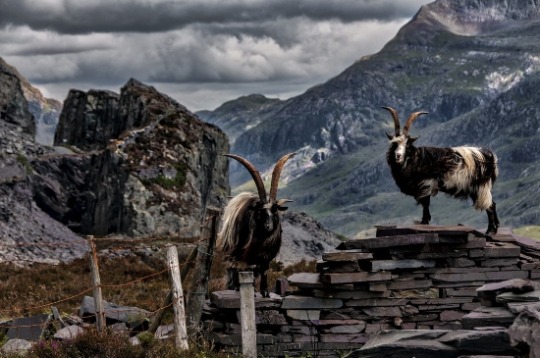
View On WordPress
#dewithon24#CWLT#Dewithon#Horatio Clare#Jon Mlynarski#Reading Wales 2024#Welsh Culture#Welsh Folktales#Welsh Legends#Welsh Myths
0 notes
Text

Guinevere and Iseult: Cartoon for Stained Glass, William Morris. 1862.
#art#aesthetic#art history#historical fashion#historical art#women in art#victorian#women#pseudo medieval art#medieval art#1860s art#medieval aesthetic#guinevere#iseult#Isolde#arthurian legend#medieval fashion#1860s#william morris#stained glass#tristan and iseult#Arthur and Guinevere#king arthur#medieval legend#french medieval#welsh medieval#Irish medieval#engraving#cartoon#fashion
2K notes
·
View notes
Text

772 notes
·
View notes
Text


Illustrations from The Mabinogion by Alan Lee (2001)
#alan lee#art#illustration#modern art#english artist#british artist#books#book illustration#mythology#welsh legend#welsh mythology#knight#knights#the mabinogion
3K notes
·
View notes
Text

King Arthur. Illustration by an unknown artist from a 15th century Welsh manuscript of Geoffrey of Monmouth's History of the Kings of Britain (Historia Regum Britanniae). Now in the National Library of Wales, Aberystwyth. Photo credit: National Library of Wales.
#art#art history#Middle Ages#medieval#medieval art#King Arthur#Arthurian legend#Arthuriana#illustration#illuminated manuscript#manuscript illumination#Geoffrey of Monmouth#Welsh art#15th century art#National Library of Wales
324 notes
·
View notes
Text
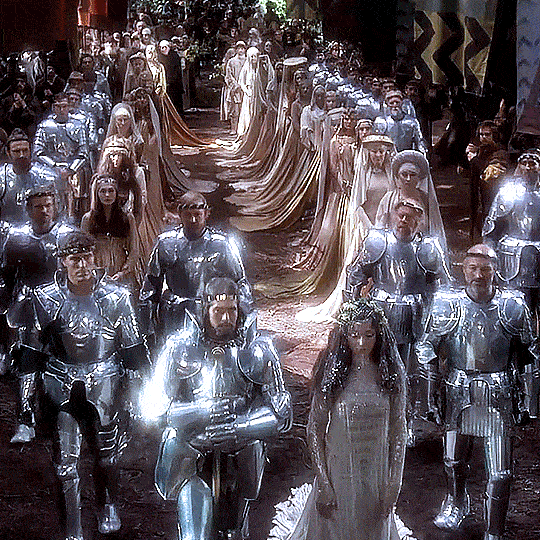
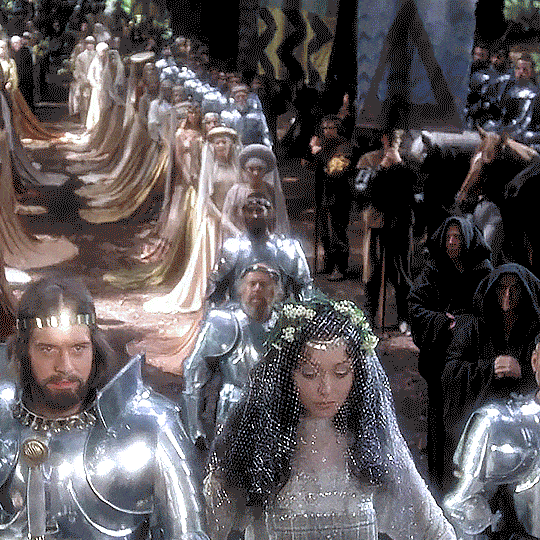
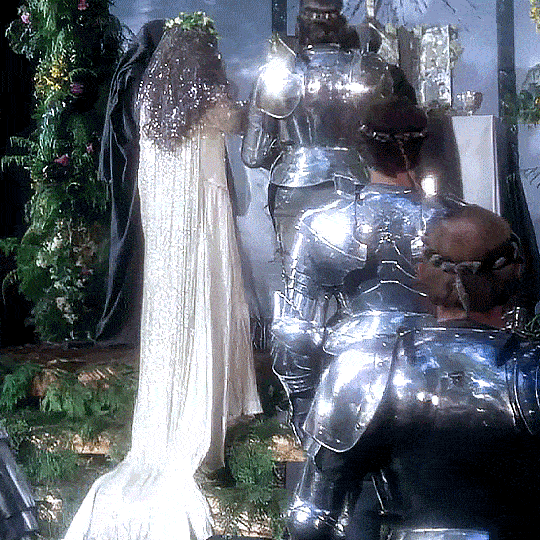
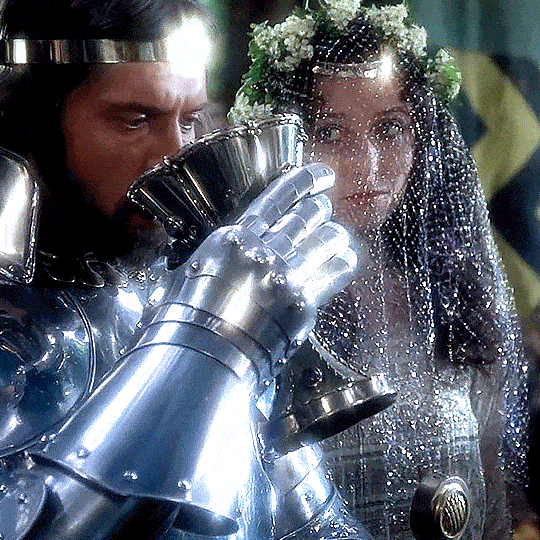

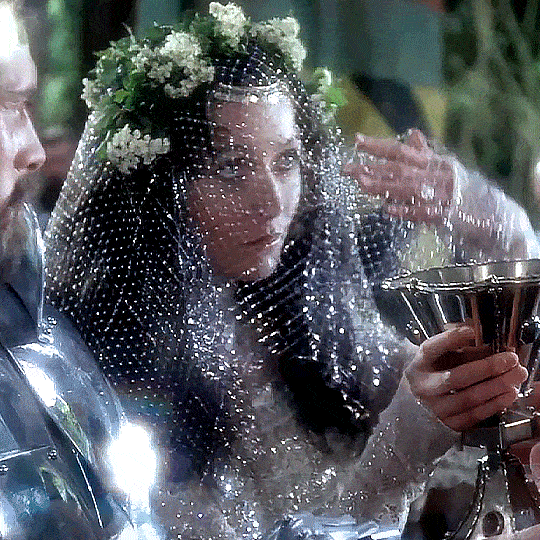
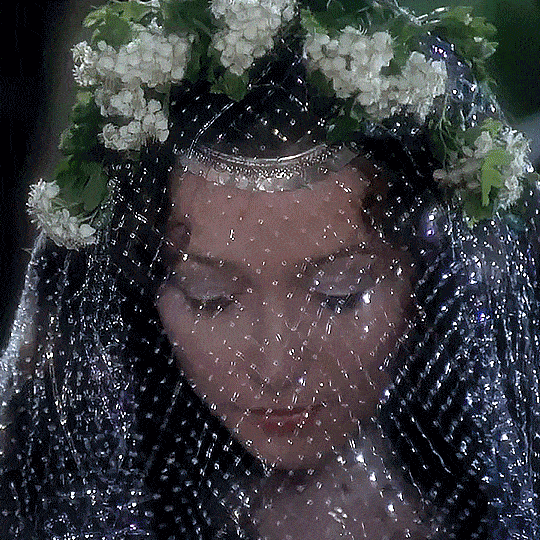


Excalibur, 1981
#excalibur 1981#arthurian legend#english mythology#welsh (mabinogi) and celtic mythology#european history#80s movies#period movies
302 notes
·
View notes
Note
hi anon again and no you didn't bore me at ALL!! i loved hearing about the welsh arthurian mythos and i want to know more. please tell me where i can read about them and tell me interesting facts you like about it!!!!!!!!
Anon, I am hugging u. Thank u for saying I didn't bore u!!! So glad u liked my mad ramblings!!!
Okay, so The Mabinogion is probably a good place to start. It contains four branches of Welsh mythology which sorta ties into Welsh Arthuriana because some of the gods (Manawydan, Pryderi, Gwyn ap Nudd, Mabon ap Modron, Bendigeidfran's head.) pop up in both. Also, it contains Culhwch and Olwen which is a tale concerning Arthur's cousin Culhwch going on a quest with Arthur and his knights so he can marry Ysbaddaden Pencawr's daughter, Olwen. It's believed to be the earliest-written Arthurian romance preserved in manuscripts. It also contains three other Arthurian romances which are either Welsh tales that have been adapted by De Troyes and then back into Welsh but with a twist, or just based on French romance tales that have been repressed for the Welsh. (Idk really know which one is true but they're all fun!!!)
There's also the tales of Lludd and Llefelys (a personal fave.), The Dream of Rhonabwy (a fictional dream containing Arthurian characters but also actually REAL LIFE Welsh ruler Madog ap Maredudd.), AND The Dream of Macsen Wledig which is essentially one man's quest to bonk a hot lady in Caernarfon. (Tbf, Macsen Wledig is somewhat of an Arthurian figure in his own right cuz he too is seen as a Mab Darogan (prophecised son) in Welsh Culture because he united the Welsh under one banner, and then died, and then Wales immediately split into kingdoms again.)
You can either access Charlotte Guest's translation which I am sure @queer-ragnelle has scanned, or Sioned Davies' new translation which has handy dandy footnotes and such.
There's also Gwyn Jones and Thomas Jones translation which uses a lot of the medieval language but was also made into a beautifully illustrated book by Alan Lee (An illustrator who is famous for LOTR illustrations). Jeffrey Gantz's edition is, I think, the most recently published edition but you can tear Sioned Davies from my COLD DEAD HANDS. Or, if you like poetry, one of my old English lit lecturers, Matthew Francis, has done a poetry version of the four branches! It's amazing!!!!
Also, Naxos has an audiobook version read by Matt Addis which uses Guest's translation but is good for listening to. I love it.
(You'll also want Trystan ac Essyllt, 'The Triads of Britain' and 'The Arthur of the Welsh' which are written by Rachel Bromwich, and I recommend O.J. Padel's 'Arthur in Medieval Welsh Literature' for more on how he's portrayed through that. And if you like modern re-tellings Seren Books has a box set of them! Each one is a re-telling of each branch of the Mabinogi, Culhwch and Olwen, the three romances, and the others. Very fun!)
Now in terms of my favourite things: Peredur being Urien's first cousin irl made me be like WHAT? Like, they're SO interconnected it's MADNESS. Urien, Owain, and Peredur are all related. Also, the fact that Welsh Arthuriana has swallowed up eight irl monarchs (Edern ap Nudd, Cunedda, Owain, Urien, Geraint, Peredur, Macsen Wledig, Cynon ap Clydno (Owain's sister, Morfudd's, lover), and Cynyr Ceinfarfog (Cai's dad), one poetic genius (Taliesin - who wrote about Urien as it goes!!! BTW read the tale of Taliesin. Sjdddkxk. The Jones and Jones translation has it, the Davies translation of the Mabinogi does not.), Emrys Wyllt who was the inspiration for Merlin, and sixty-seven thousand gods, as well as a few saints.
My favourite fact about Welsh Arthuriana is probably that Gwalchmai and Peredur probs had a relationship, Arthur is canonically in love with his boat, Cai literally says 'if u held my dick like that I'd die.' in Culhwch and Olwen, and Gwenhwyfar's a fuckin GIANTESS. 😍😍😍😍 I have many more facts but like I don't want to clutter the feed!!!!!
Hope my rambles were helpful in some way! Have a good day/night, anon! ☺️🧡
#anon ask#anon ur super nice djdjdkd#arthuriana#welsh mythology#mabinogion#the mabinogion#welsh myth#y mabinogi#the mabinogi#arthurian legend#arthurian mythology#oh fuck also the mab is a good book rec too! its a modern retelling and its targeted for kids but michael sheen does the foreword!#its SO FUN#the third branch is written from Cigfa's perspective and it SLAPS#king arthur#arthur pendragon#merlin#queen guinevere#owain ap urien#urien rheged#taliesin#sir kay#the four branches of the mabinogi#charlotte guest#welsh folklore#welsh legends#arthurian literature#arthurian legends
26 notes
·
View notes
Text

the lady of the lake
#art of the day#digital illustration#artists on tumblr#women artists#mythology art#digital art#illustration#graphic art#myth#king arthur#arthurian legend#lady of the lake#nimue#merlin#excalibur#welsh mythology
108 notes
·
View notes
Text
"Green is my steed of the tint of leaves..."
Guinevere being iconic, Ymiddiddan Melwas ac Gwenhwyfar
#queen guinevere#gwenhwyfar#melwas#maleagant#dialogue of melwas and gwenhwyfar#welsh legends#arthurian mythology#arthuriana#arthurian legend#arthurian legends
9 notes
·
View notes
Text
Seeking a book to read this winter break?
Brand "New" List of Additions to the Arthurian Preservation Project Archive
In time, all books will be added to my Retellings List or Medieval Literature List respectively, and possibly a third page for handbooks/informational resources. Retellings may be under construction for a bit as I reformat to accommodate the influx in links. There are some duplicates—Alan Lupack's and Mike Ashley's anthologies occasionally contain a one-off story I've otherwise included in an individual volume of collected works by the author.
Links connect to corresponding PDFs on my Google drive where they can be read and downloaded for free. But if you like what I do, consider supporting me on Ko-Fi. I haven't yet read these listings in full; I cannot attest to their content or quality. A big thank you to @wandrenowle for the help collecting!
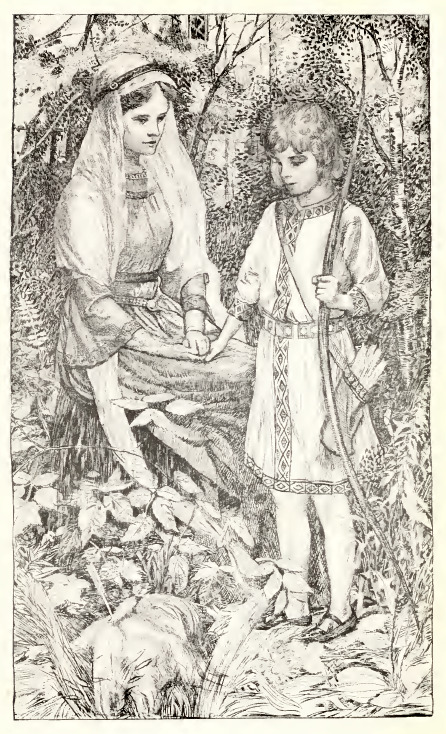
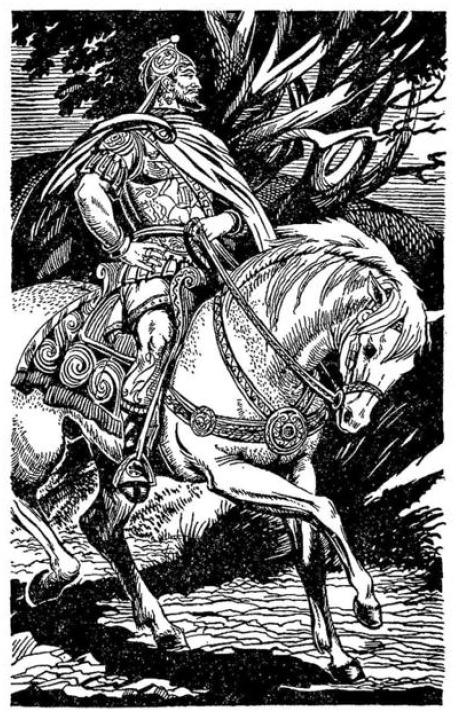
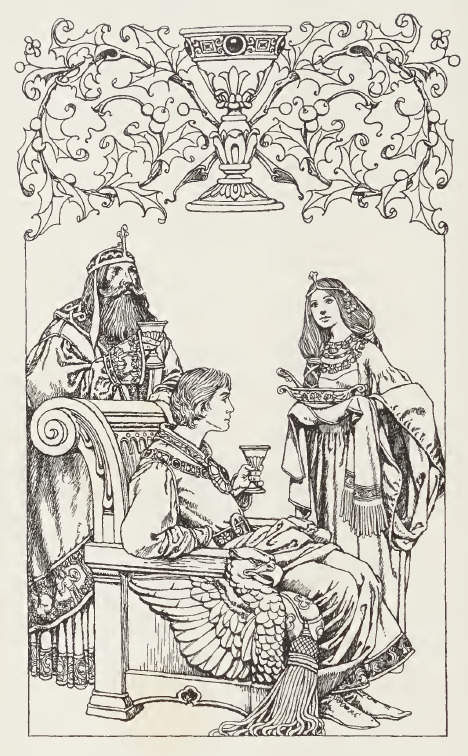
Modern Retellings
Merlin in Love by Aaron Hill (1790) — Opera about Merlin & his love interest Columbine.
The Fortunate Island by Max Adeler (1882) — A family shipwrecks on an island only to discover its populated with Arthurian knights, including Dinadan, Bleoberis, & Agravaine.
Sir Marrok by Allen French (1902) — Werewolf knight.
The Story of Sir Galahad by Mary Blackwell Stirling (1908) — Illustrated retelling of Malory's Grail Quest.
The Story of Parzival by Mary Blackwell Stirling (1911) — Illustrated retelling of Eschenbach's Parzival.
Stories From King Arthur and His Round Table by Beatrice Clay (1913) — Illustrated retelling of Malory.
Cloud Castle and Other Papers by Edward Thomas (1922) — Contains two Arthurian entries: the story Bronwen The Welsh Idyll about Agravaine & his lady Bronwen, & the essay Isoud about the Prose Tristan.
Collected Poems by Rolfe Humphries (1924-1966) — Contains Dream of Rhonabwy about Owain & Arthur's chess game, A Brecon Version about Essylt/Trystan, Under Craig y Ddynas about Arthur's "sleeping" warriors, & The Return of Peredwr about the Grail Hero's arrival to court.
Peronnik the Fool by George Moore (1926) — The quest for the Holy Grail based on Breton folklore.
The Merriest Knight by Theodore Goodridge Roberts (1946-2001) — Anthology of short stories all about Dinadan.
The Eagles Have Flown by Henry Treece (1954) — A third Arthurian novel from Treece detailing the rivalry between Artos & Medrawt, with illustrations this time.
Launcelot, my Brother by Dorothy James Roberts (1954) — The fall of Camelot from Bors perspective, as a brother of Launcelot.
To the Chapel Perilous by Naomi Mitchison (1955) — Two rival journalists report about the goings on in Camelot.
The Pagan King by Edison Marshall (1959) — Historical fiction from the perspective of Pagan King Arthur.
Kinsmen of the Grail by Dorothy James Roberts (1963) — The Grail Quest but Gawain is Perceval's step dad.
Stories of King Arthur by Blanche Winder (1968) — Illustrated retelling of Malory.
Drustan the Wanderer by Anna Taylor (1971) — Retelling of Essylt/Drustan.
Merlin's Ring by H. Warner Munn (1974) Gwalchmai is a godson of Merlin's that uses his ring to travel through the magical & real worlds.
Lionors, Arthur's Uncrowned Queen by Barbara Ferry Johnson (1975) — Story of Arthur's sweetheart & mother of his son, Loholt.
Gawain and The Green Knight by Y. R. Ponsor (1979) — Illustrated prose retelling of SGATGK poem.
Firelord (#1), Beloved Exile (#2), The Lovers: Trystan and Yseult (#3) by Parke Godwin (pseudonym Kate Hawks) (1980-1999) — Book 1 Arthur, book 2 Guinevere, book 3 Trystan/Yseult.
Bride of the Spear by Kathleen Herbert (1982) — "Historical" romance retelling of Teneu/Owain.
Invitation to Camelot edited by Parke Godwin (1988) — Anthology of assorted Arthurian stories from authors like Phyllis Ann Karr & Sharan Newman.
Arthur, The Greatest King - An Anthology of Modern Arthurian Poems by Alan Lupack (1988) — Anthology of modern Arthurian poetry by various authors including E. A. Robinson, William Morris, C. S. Lewis, & Ralph Waldo Emerson.
The White Raven by Diana L Paxson (1988) — "Historical" romance retelling of Drustan/Esseilte.
Merlin Dreams by Peter Dickinson (1988) — Illustrated by Alan Lee.
The Pendragon Chronicles edited by Mike Ashley (1990) — An anthology of Arthurian stories, including some translations such as the Lady of the Fountain, and retellings by John Steinbeck & Phyllis Ann Karr.
Grails: Quest of the Dawn edited by Richard Gilliam (1992-1994) — Anthology of Grail Quest stories.
The Merlin Chronicles edited by Mike Ashley (1995) — Anthology about Merlin from authors like Theodore Goodridge Roberts & Phyllis Ann Karr.
The Chronicles of the Holy Grail edited by Mike Ashley (1996) — Anthology about the Holy Grail from authors like Cherith Baldry & Phyllis Ann Karr.
The Chronicles of the Round Table edited by Mike Ashley (1997) — Anthology of assorted Arthurian stories from authors like Cherith Baldry & Phyllis Ann Karr.
Sleepless Knights by Mark H Williams (2013) — 1,500 years have passed but Lucan the Butler’s still on the clock.
Medieval Literature
Three Arthurian Romances (Caradoc, The Knight with The Sword, The Perilous Graveyard) [This is on the Internet Archive & cannot be downloaded. If someone could help with that, lmk!] translated by Ross G. Arthur
Le Bel Inconnu (The Fair Unknown) translated by Colleen P. Donagher
Segurant The Knight of the Dragon (Portuguese) edited by Emanuele Arioli
An Anglo-Norman Reader by Jane Bliss
Stanzaic Morte Arthur / Alliterative Morte Arthure edited by Larry D. Benson
Sir Perceval de Galles / Ywain and Gawain edited by Mary Flowers Braswell
Sir Gawain: Eleven Romances and Tales edited by Thomas Hahn
Prose Merlin edited by John Conlee
The Middle English Breton Lays edited by Eve Sailsbury & Anne Laskaya
Il Ciclo Di Guiron Le Courtois Volumes 1-7 (Italian)
Wace's Roman de Brut / Layamon's Brut by Robert Wace & Eugene Mason
Arthurian Literature by Women edited by Alan Lupack & Barbara Tepa Lupack
Handbooks
Studies in the Fairy Mythology of Arthurian Romance by Lucy Allen Paton (1960)
A Companion to the Gawain-Poet edited by Derek Brewer (1990)
The Mammoth Book of King Arthur edited by Mike Ashley (2005)
A Bibliography of Modern Arthuriana 1500-2000 by Ann F. Howey & Stephen R. Reimer (2006)
#arthurian preservation project#arthuriana#arthurian mythology#welsh mythology#arthurian legend#arthurian literature#king arthur#queen guinevere#sir gawain#sir lancelot#sir percival#sir perceval#sir mordred#sir galahad#sir owain#sir yvain#sir kay#sir bedivere#sir bedwyr#merlin#sir tristan#queen isolde#sir marrok#sir lucan#lionors#sir loholt#sir bors#sir agravain#sir agravaine#my post
102 notes
·
View notes
Text
Note: This is just for fun and because I'm nosy. I realize the timeline for inspiration is not always simple and can be a bit muddy.
#arthurian#arthuriana#arthurian legend#arthurian mythology#welsh mythology#geoffrey of monmouth#chretien de troyes#The Vulgate Cycle#Le Morte D'Arthur#Idylls of the King#Howard Pyle
120 notes
·
View notes